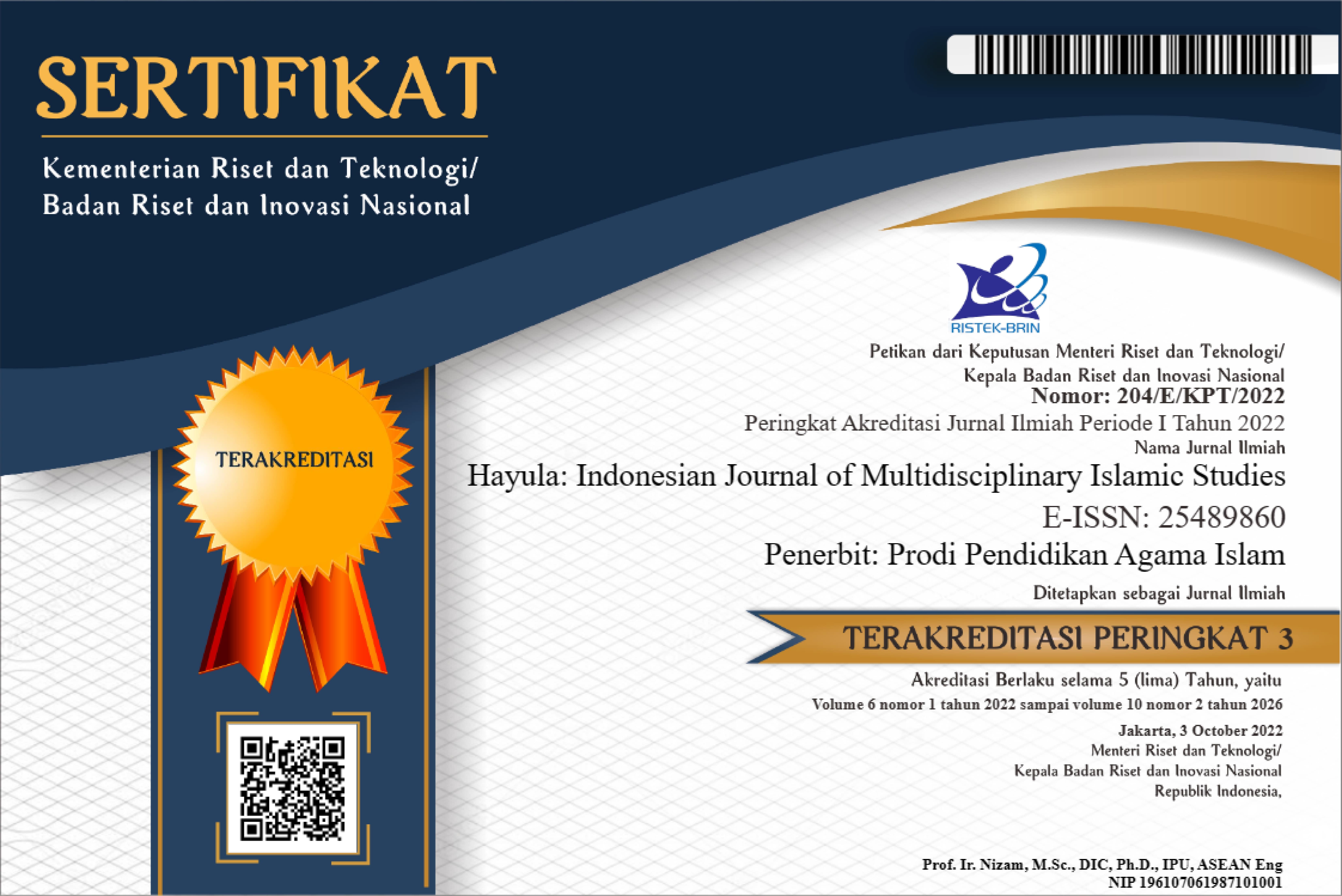Verifikasi dan Pemetaan Arah Kiblat Bangunan Masjid dan Musola
DOI:
https://doi.org/10.21009/004.2.06Keywords:
kiblat, masjid, musola, ka’bahAbstract
Qibla's direction of several mosques and musola buildings in Bandung Wetan Sub-District needs to be re-verified. The right direction of the Qibla from the city of Bandung is 295 ° 10 '. The deviation varies due to the condition of the building structure, such as in the alley and following the shape of the land size. It was also caused by the use of tools without calibration and the lack of understanding of the surrounding community about the importance of facing the Qibla when performing prayer. This study aims to analyze the mapping of the direction of the mosque and the musola in Bandung Wetan Sub-District. This study uses a qualitative approach resulting from field observations, with the interactive analysis technique of Miles and Huberman, through the reduction of data generated from the measurement of the Qibla direction, the presentation of essential data on the Qibla direction deviation, and the inference. The results of this study indicate that 70.1% of mosques / musola deviate in the direction of Qibla under 1 degree, while the remaining 29.9% above 1 degree with the furthest deviation by 7°6’
References
Ardi, M. N. (2018). Actualization of Ukuhwah al-Islamiyah concept as the basic foundation of moderation (Relevantization of Abdullah bin Nuh’s works) (F. L. M. Latiff, Latifah Abdul; Mokhtar, Ros Aiza Mohd; Ismail (ed.); pp. 145–151). Pusat Pengajian Teras Universiti Sains Islam Malaysia. www.ppt.usim.edu.my
Budiwati, A., & Aziz, S. (2018). Akurasi Arah Kiblat Masjid di Ruang Publik. JSSH (Jurnal Sains Sosial Dan Humaniora), 2(1), 159. https://doi.org/10.30595/jssh.v2i1.2275
Doyle, M. (2018). The Whole World in His Hands: What a Qibla Indicator Illuminates About Islamic Community in Sixteenth-Century Ottoman Turkey. In Global Tides (Vol. 12).
Hamdani, F. F. R. S., Fawzi, R., & Syahid, R. G. (2018). Pendampingan Pengukuran Arah Kiblat Masjid di Rancabango Garut. Dimas: Jurnal Pemikiran Agama Untuk Pemberdayaan, 18(1), 19. https://doi.org/10.21580/dms.2018.181.2911
Hosen, H., & Ghafiruddin, G. (2018). Akurasi Arah Kiblat Masjid di Wilayah Kecamatan Pademawu Kabupaten Pamekasan dengan Metode Mizwala Qibla Finder. AL-IHKAM: Jurnal Hukum & Pranata Sosial, 13(2), 364. https://doi.org/10.19105/al-ihkam.v13i2.1837
İlçi, V., Ozulu, İ. M., Arslan, E., & Alkan, R. M. (2018). Investigation on the accuracy of existing qibla directions of the mosques from different periods: A case study in Çorum city, Turkey. Tehnicki Vjesnik, 25(6), 1642–1649. https://doi.org/10.17559/TV-20170226111205
Kouider, R., & Ivashko, J. (2018). Study Methodology of the Architectural Periodization of Algerian Mosques and the Ritual Role of Elements (Mihrab, Minbar, Qibla, Bath for Ablution) in the Islamic Worship Service. Środowisko Mieszkaniowe, 22, 28–36. https://doi.org/10.4467/25438700sm.18.025.8706
Mulyadi, A. (2018). Pengalaman Nelayan Bintaro Gapura Sumenep dalam Penentuan Arah Kiblat dan Waktu Shalat (Perspektif Hisab-Rukyat). NUANSA: Jurnal Penelitian Ilmu Sosial Dan Keagamaan Islam, 15(2), 305. https://doi.org/10.19105/nuansa.v15i2.2060
Nurkhanif, M. (2018). Problematika Sosio-Historis Arah Kiblat Masjid “Wali” Baiturrahim Gambiran Kabupaten Pati Jawa Tengah. In Al Qodiri : Jurnal Pendidikan, Sosial dan Keagamaan (Vol. 15, Issue 2). https://doi.org/10.1234/AL QODIRI.V15I2.3187
Ritonga, H., & Butar, A. J. R. B.-. (2018). Peran Ilmu Falak Dalam Masalah Arah Kiblat, Waktu Salat dan Awal Bulan. In Al-Marshad: Jurnal Astronomi Islam dan Ilmu-Ilmu Berkaitan (Vol. 2, Issue 2). https://doi.org/10.30596/JAM.V2I2.2549
Solikin, A. (2016). Aplikasi Aturan Cosinus dan Sinus Segitiga Bola dalam Perhitungan Arah Kiblat (Sebuah Relasi antara Matematika dan Agama). MUST: Journal of Mathematics Education, Science and Technology. https://doi.org/10.30651/must.v1i2.235
Ulusoy, F. Ö. G., Üstün, B., & Kolsal, F. (2018). Searching for spatial influences of islamic beliefs on the traditional Turkish house. WIT Transactions on the Built Environment, 177, 233–244. https://doi.org/10.2495/IHA180201
Downloads
Published
How to Cite
Issue
Section
License
Authors who publish with this Journal agree to the following terms:
- Author retain copyright and grant the journal right of first publication with the work simultaneously licensed under a creative commons attribution licensethat allow others to share the work within an acknowledgement of the work’s authorship and initial publication of this journal.
- Authors are able to enter into separate, additional contractual arrangementfor the non-exclusive distribution of the journal’s published version of the work (e.g. acknowledgement of its initial publication in this journal).
- Authors are permitted and encouraged to post their work online(e.g. in institutional repositories or on their websites) prior to and during the submission process, as it can lead to productive exchanges, as well as earlier and greater citation of published works.
Users/public use of this website will be licensed to CC BY







